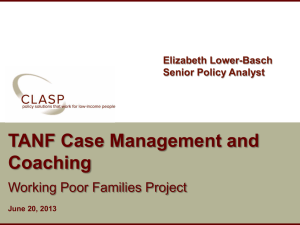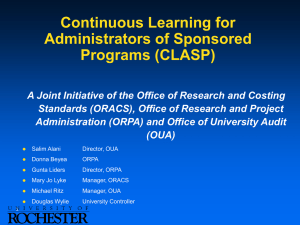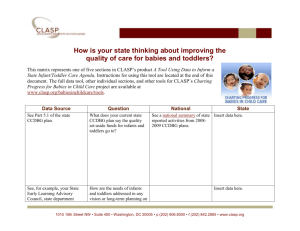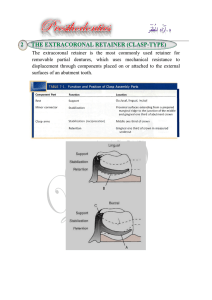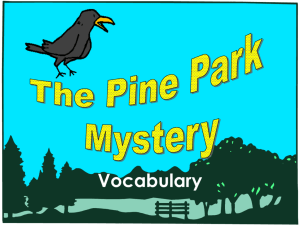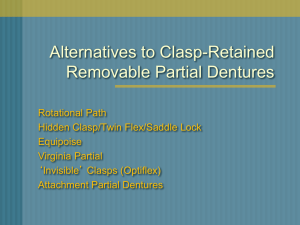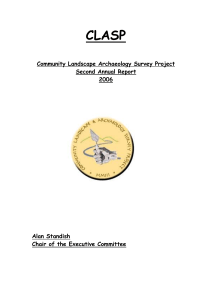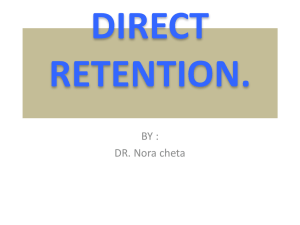Chicago Thursday TANF Education Training #2
advertisement
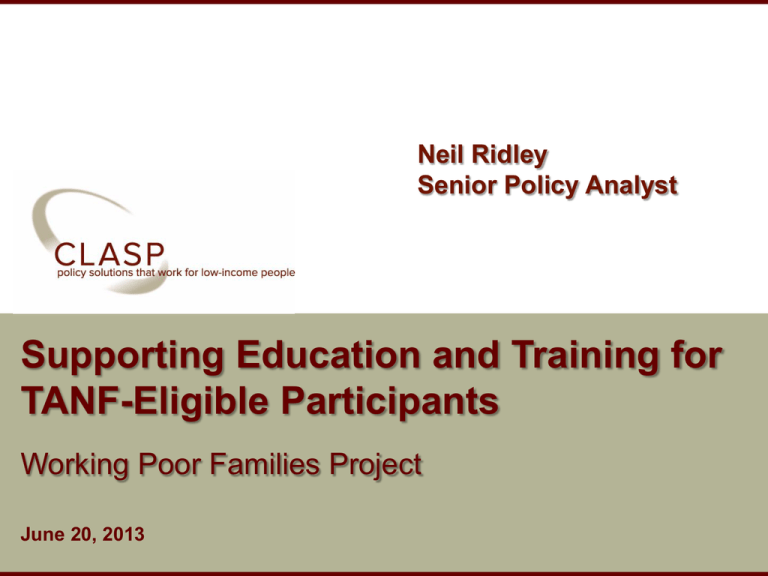
Neil Ridley Senior Policy Analyst Supporting Education and Training for TANF-Eligible Participants Working Poor Families Project June 20, 2013 www.clasp.org TANF limited to “needy families” with children, but not just to families receiving cash assistance States define income limits for “needy families” TANF supports a range of services, including education and training, support services, case management and more. www.clasp.org 2 • Career pathways are highly structured, with clear connection to workforce goals Focus on credentials with economic payoff Even participants with low basic skills can start working on occupational skills quickly “Stackable” credentials help to connect short-term and long-term goals • Address students’ overburdened lives Supportive services, such as transportation, etc. www.clasp.org 3 Bridge Prep Intentional focus on work skills into beginning basic adult education BRIDGE PREP Integrated Instruction Adult Basic Education skill building within a Career & Technical Education course Bridge I Low intermediate reading, writing, speaking, and math skills taught in the context of a variety of occupational sectors INTEGRATED INSTRUCTION Industry recognized credential in regional high demand field POSTSECONDARY CREDENTIAL BRIDGE I BRIDGE II Bridge II High intermediate basic skills and focused preparation for targeted postsecondary occupational courses in the context of a specific occupational sector INTEGRATED SUPPORT SYSTEMS Support services for success including barrier mitigation, career advising, system navigation provided by workforce development, community based organizations, and human services www.clasp.org • Curriculum redesign and incremental costs • Support services Academic supports: tutoring, study groups, academic and career advising Personal supports: counseling, referral services Other supports: emergency funds, child care, transportation Student financial aid: when not otherwise available • Work-study jobs • Incentive grants (to students or institutions) www.clasp.org 6 • Launched in 2003 as a workforce strategy for TANFeligible adults • Available to adult caretakers, parents or relatives of a child under the age of 21 who are current or former public assistance recipients or who have incomes below 250 percent of the federal poverty line www.clasp.org 7 • Academic and support services through two-year colleges and technical centers associated with four-year universities. • Each student receives: Up to $1,500 for tuition and support services An assigned counselor or tutor Access to reliable transportation and childcare through private vendors Links to Dept. of Workforce Services to ensure delivery of other support services. www.clasp.org 8 • Launched in 2005 as a pilot workforce program for non-custodial parents • Serves unemployed and under-employed individuals who are behind on their child support payments and whose children are current or former public assistance recipients • Funded by TANF and included in the state TANF plan www.clasp.org 9 • Court-ordered requirement for participation, with consequences for non-participation • Role of local workforce boards and staff in providing case management and services • Services offered: www.clasp.org Job referrals Support services Short-term training, GED and ESL instruction Subsidized employment/work experience Retention assistance and career counseling 10 • TANF funds used for summer employment programs for low-income youth as well as supportive services, transportation for employed individuals and incentive payments • Available to youth in families receiving public assistance or youth in TANF-eligible families • Option to co-enroll youth in WIA youth programs to take advantage of occupational skills training and other youth services www.clasp.org 11 • TANF offers a rich set of supportive services and case management • TANF can be used for a wide range of education and training services • TANF is focused on low-income populations www.clasp.org • WIA provides access to occupational training • WIA can offer strong business connections 12 WIA TANF SNAP E&T Adult Ed CSBG Perkins www.clasp.org 13 • HPOG awards go to a mix of state agencies, local workforce boards, colleges, community organizations and tribal applicants. • Grants are used to help TANF recipients and other low-income individuals acquire skills and earn credentials in healthcare fields. • Another opportunity to coordinate TANF, WIA, adult education, colleges and other partners www.clasp.org 14 • Any state legislation underway? • New program development? • Research or other efforts to make the case? www.clasp.org 15 • Some states are claiming as TANF MOE large amounts of general state spending on postsecondary education – scholarships for families with incomes at 500% of FPL or more. • The concern—there is a real possibility of supplanting existing state funding. www.clasp.org 16 1. Do programs supplant existing funding for services or student aid? 2. Are programs targeted at families with income eligibility at 250% of poverty line or below? 3. Do programs incorporate individualized services or supports that are appropriate for low-income families, not just financial aid? 4. Do they support systems change or new models of services? www.clasp.org 17 • Do these questions/criteria make sense? • Your input on federal legislative change Drawing the line between programs that should be funded and not funded www.clasp.org 18 For more information: Neil Ridley nridley@clasp.org 202-906-8010 www.clasp.org 1200 18th St, NW Suite 200 Washington, DC 20036 www.clasp.org 19

